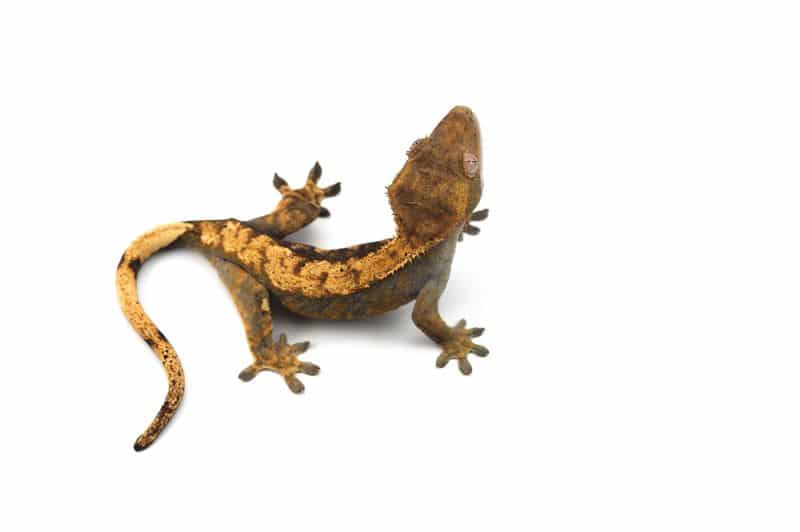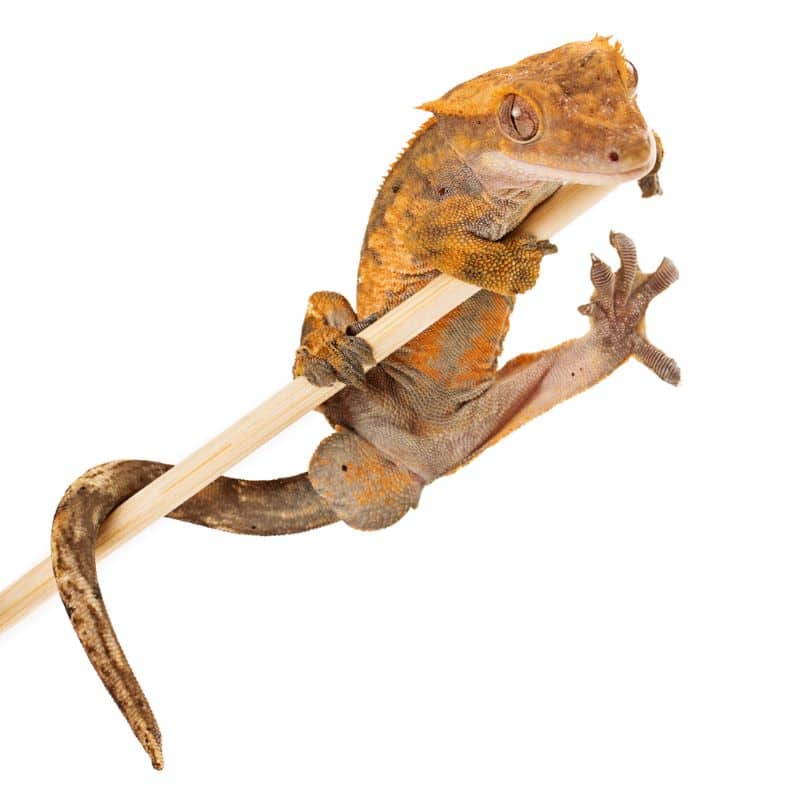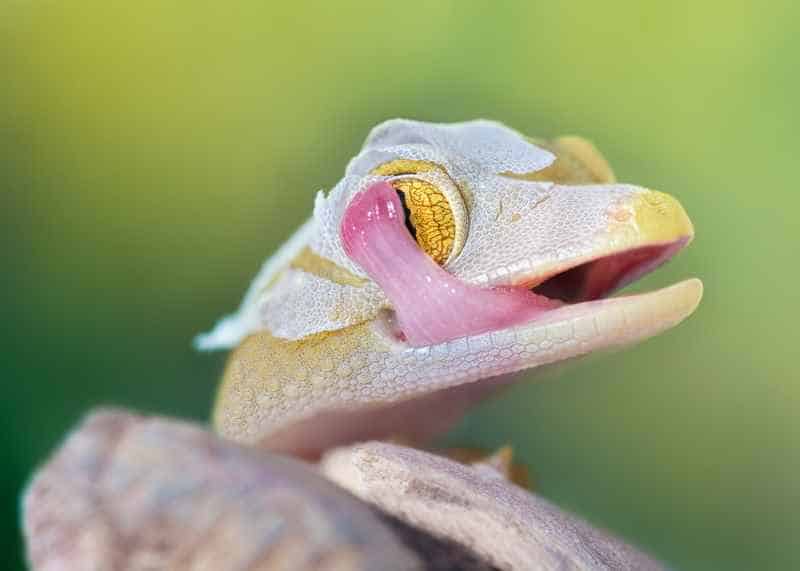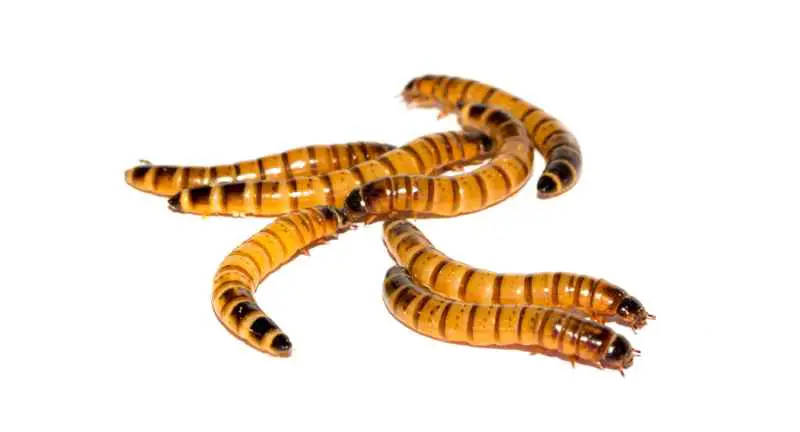Why Crested Geckos Sleep With Their Eyes Open (Full Details)
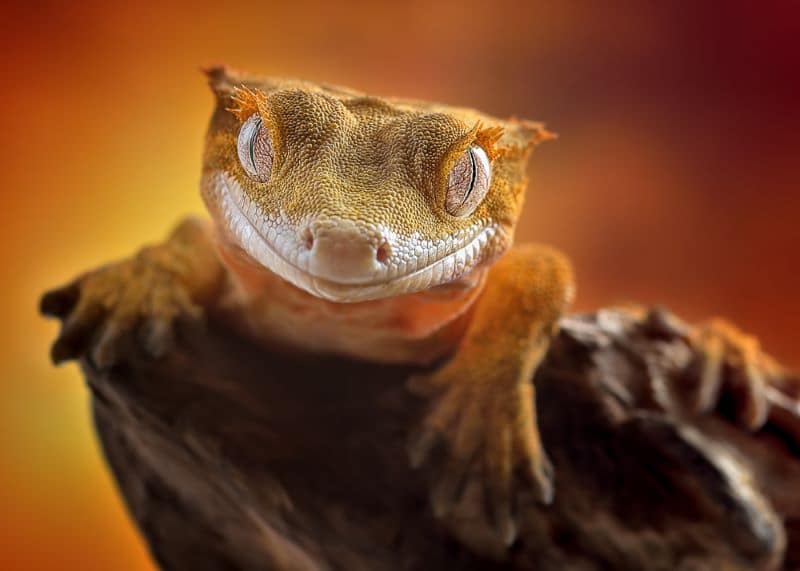
Have you ever seen your crested gecko sleeping with its eyes closed? More than likely, you haven’t! Crested geckos sleep with their eyes open, making it difficult to tell when they’re actually asleep.
Crested geckos sleep with their eyes open because they don’t have eyelids- they can’t close their eyes. Geckos use their tongue to keep their eyes clean and have special, clear scales that protect their eyes and keep them moist.
So, now that you know that crested geckos sleep with their eyes open, you’ll want to know how to tell when they’re sleeping. Everything’s in this article, so stick around!
Contents
How To Know When They Are Asleep
Crested geckos leave their eyes open while sleeping, making it difficult for new pet parents to tell if they’re awake or not. However, it becomes apparent when your gecko is asleep once you know what to look for.
You’ll need to watch the gecko’s crests and eyes to tell. The crests are the spiked scales you see along the gecko’s body. They begin around the eyes and travel down to the end of the reptile.
These crests stand up when the gecko awakens, making it appear more alert.
When the gecko sleeps, the crests are flat, making them harder to notice. This trait is very easy to detect and a clear indicator of whether your pet is napping or not.
For the eyes, your gecko will have wide pupils while awake. When the gecko sleeps, its pupils turn into tiny slits. So, next time you’re unsure if your gecko is awake, you can quickly check for these signs!
How Do They Sleep With Eyes Open?
Crested geckos don’t have eyelids- so they can’t close their eyes. That means they need to sleep with them open. However, light doesn’t bother them as much as you think.
When the gecko sleeps, its pupils constrict, forming small slits. Being able to close their pupils makes it possible for your gecko to restrict the amount of light that makes it into their eyes. So, they can sleep comfortably even if they don’t have eyelids.
It’s also tough to notice, but your crested gecko’s eyes sink into their head slightly while they sleep. This ability also helps them reduce the light they must deal with. Your gecko might hide during the brightest parts of the day to help them stay asleep too.
Plus, crested geckos are nocturnal, so they’re already used to sleeping during the day. Because of this, light doesn’t irritate them that much while they sleep. You’ll still want to ensure you don’t use harsh lamps on them when it’s dark outside because this can disrupt their sleeping patterns.
Why Do They Sleep With Eyes Open?
Crested geckos appear to sleep with their eyes open. However, making their pupils smaller, sinking their eyes slightly into their heads, and hiding can help them sleep during the day. These animals don’t have eyelids like us.
Instead, they use translucent scales to protect their eyes. It’s almost like their eyes are always closed, except they can see through their “eyelids.” Essentially, crested geckos don’t have any other choice but to sleep with their eyes open!
Your gecko will probably hide when it wants to sleep. Geckos do this to limit the amount of light around them while sleeping. Plus, they are prey animals, so they want to feel safe while resting.
Overall, crested geckos can only sleep with open eyes. You might notice them licking their eyes from time to time to clean debris off the invisible scale that covers them. Geckos not having eyelids also explains why you’ve never seen your pet blink!
Final Thoughts
To summarize, crested geckos sleep with their eyes open. Since they don’t have eyelids, it’s impossible for them to close their eyes. Your pet instead hides and constricts its pupils while asleep. You can also tell if they’re sleeping if their crests lay flat against their body.
